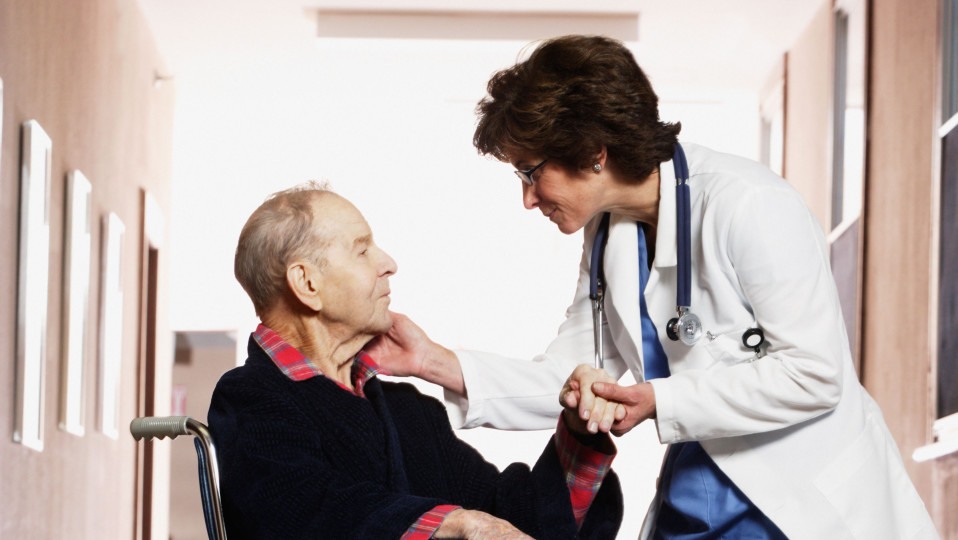5 General Post-Operative Care Guidelines for Stroke Patients
Depending on the ailment that caused the patient to require surgery in the first place, a commonly expected complication of the same is one or multiple incidents of stroke following the surgery during the recovery period. This may occur as a complication of the surgery or of any existing pre-operation conditions as well but needs to be rectified. The best way to ensure that the patient receives optimal care and attention to deal with this complication is to make sure that firstly, Post Surgery, the patients are not directly taken home where there are no facilities or trained experts who can provide immediate care and treatment. Rather, by admitting them to a proper rehabilitation centre, with excellent stroke care facilities and holistic improvement plans, providing personalised custom care for the patients, such adverse onsets can be best dealt with.
The following are the recommended guidelines to be followed when looking after a patient who has suffered a stroke, postoperatively.
1. Understanding the cause of the stroke and assessment of the same.
The patients’ health assessment on a wholesome manner is of utmost importance and should be carried out by an experienced medical professional so that adequate treatment can be provided and further incidents of the same can be prevented. It is very important that immediately the treatment is started, the earlier the better so that the complications of the stroke can be prevented and the patients’ recovery from the initial surgery doesn’t suffer due to the occurrence of the stroke. The complete status of the patient is assessed by various tests and examinations that aim to determine the exact cause of the stroke as well as the extent of the damage done by it. This assessment is important to provide the necessary post-operative care to the patient with additional care. The risk factors that have led to the incidence need to be identified as well and acted upon.
2. Treatment for a short incident of the stroke- antiplatelet therapy.
Irrespective of the exact cause of the stroke, the first line of management for a stroke patient who has had a transient ischemic attack- duration of a stroke for a short period of time- is treatment using antiplatelet medications. Along with this, the blood pressure values are determined and if there is prolonged hypertension that is evident (high blood pressure) then this needs to be lowered using medication immediately to control the effects of the stroke on the patient as well as prevent reoccurrence.
3. Treatment targeted for the cerebral bleeding to control the same.
In case there is bleeding intracerebrally, surgical intervention might be required. The surgery is done to control the bleeding in the brain and prevent further bleeding.
4. Rehabilitation of the patient following the incident of the stroke.
The process of rehabilitation of a stroke patient following surgery is the same as that of any stroke patient apart from the fact that there is a need for excess therapy and care. This is because the patient has to recover from the stroke as well as the surgery that they have been through. The rehabilitation for such a patient includes physiotherapy to exercise the brain to recognise motor stimulation again. The brain is capable of receiving signals from the muscles that have been contracted so that they can relax again, the aftermath of the stroke can be dealt with since the paralysis is reverted. This requires a significant amount of effort on the part of the patient physiotherapist. Apart from this, the families of the patients should be educated on how best to take care of the patient once they have been discharged.
This includes helping the patient not just to move about and carry around their daily work but also to motivate and encourage them so that they do not feel dependent on the families to perform even basic functions. Another important part of the rehabilitation facility for a patient who has been through an incident of stroke following a surgery is the psychological recovery for which various methods and plans are followed which include group counselling sessions, group therapies, one to one counselling sessions as well as educating the families to make the patient as comfortable as possible both physically and mentally because the families play the most important role in making the patient self-sufficient again.
5. Life After the Rehabilitation- Preparation of the Family and Patient for the Same.
Once the patient shows initial recovery from the aftermath of the stroke and the surgery, upon the discharge of the patient, a set of instructions are to be provided to the patients and their families on how to go about their lives and what changes they need to make in the same to prevent reoccurrence of this. These lifestyle changes include a set of exercises as a part of continuing physiotherapy to achieve maximum results of the rehabilitation. Apart from this, a proper dietary pattern is recommended to be followed such that hypertension does not reoccur. A low sodium diet is prescribed ideally by nutritional experts and follows up is done on the patients to ensure that they are in good physical and mental health.
These set of guidelines are generally followed by the medical personnel to support patients, manage their current conditions along with successfully putting a pause on the chances of the stroke occurring again keeping in mind the excessive amount of trauma the patients ensue having been through the surgery as well.

